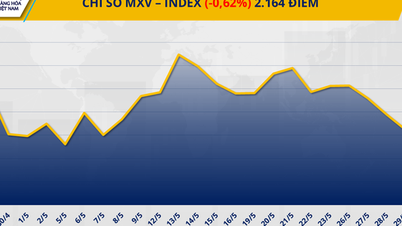
According to CNN (USA), many online users have excitedly posted pictures of canned fish with vibrant packaging. They encourage the online community to try variations of canned fish dishes such as pasta with canned sardines for $4.99. Social people even organize canned fish parties.
Canned fish was one of the most popular COVID-19 hoarding items, but it still holds a firm place in the American mind, unlike toilet paper and dalgona coffee.
Interest in canned fish has spiked in recent months, coinciding with growing consumer economic concerns and a decline in shopping sentiment due to the trade war waged by the Trump administration.
While most economists believe the U.S. is not currently in a recession, economic optimism is at a near-record low this May, according to the University of Michigan's consumer sentiment index. Some experts say canned fish could be a "recession indicator."
Google searches for “canned fish” spiked to a peak in early 2024 and have continued to rise ever since. In the past 90 days, searches for Nuri’s Portuguese sardines in olive oil have spiked 2,750% and Brunswick sardines in olive oil have increased 4,000%.
Ross Steinman, a professor at Widener University, explains why consumers may be looking for accessible, affordable ways to get away from their daily lives and relax. Americans may not be traveling much this summer, so instead of booking a trip to Mallorca, they’re sampling imported Spanish canned fish in eye-catching Mediterranean blue packaging.
Spain and Portugal are known for exporting canned fish, and Northern Europe has a long history of canning. The canned fish industry is also strong in Japan, South Korea, and China. This can make it difficult for canned fish businesses in the United States to plan ahead in the face of rising import tariffs, since most of the fish in the United States is imported.
Tariffs have trapped many businesses that rely on imports and undermined consumer confidence.
Dan Waber, co-owner of Rainbow Tomatoes Garden, a canned fish retailer, said he has not made any major decisions about imports because of the reciprocal tariffs. “All we can do is react,” he said. “When prices go up, our prices go up.” But the variety of canned fish prices means consumers can choose a $6 can of sardines instead of a $10 can.
Amelia Finaret at Allegheny College noted to CNN that it's difficult to say whether canned fish is a direct recession indicator.
The surge in sales of cheap canned tuna would be a red flag. But the popularity of affordable cans of sardines with consumers may simply reflect Americans diversifying their preferences for healthy protein sources.
Amelia Finaret also noted that when faced with economic pressures, consumers tend to turn to two types of foods at the grocery store: long shelf life and convenience. Canned fish has both. “If people really just want convenience, then maybe canned fish is an indicator of the pressure that’s building, that they don’t have time to go into the kitchen and prepare fresh fish,” she said.
Source: https://doanhnghiepvn.vn/quoc-te/ca-hop-chi-bao-moi-cua-nen-kinh-te-my-/20250528021157021




![[Photo] Prime Minister Pham Minh Chinh attends the event "Digital transformation of the banking industry by 2025"](https://vphoto.vietnam.vn/thumb/1200x675/vietnam/resource/IMAGE/2025/5/29/0e34cc7261d74e26b7f87cadff763eae)





















![[Photo] Prime Minister Pham Minh Chinh receives leaders of Excelerate Energy Group](https://vphoto.vietnam.vn/thumb/1200x675/vietnam/resource/IMAGE/2025/5/29/c1fbe073230443d0a5aae0bc264d07fe)

































































Comment (0)